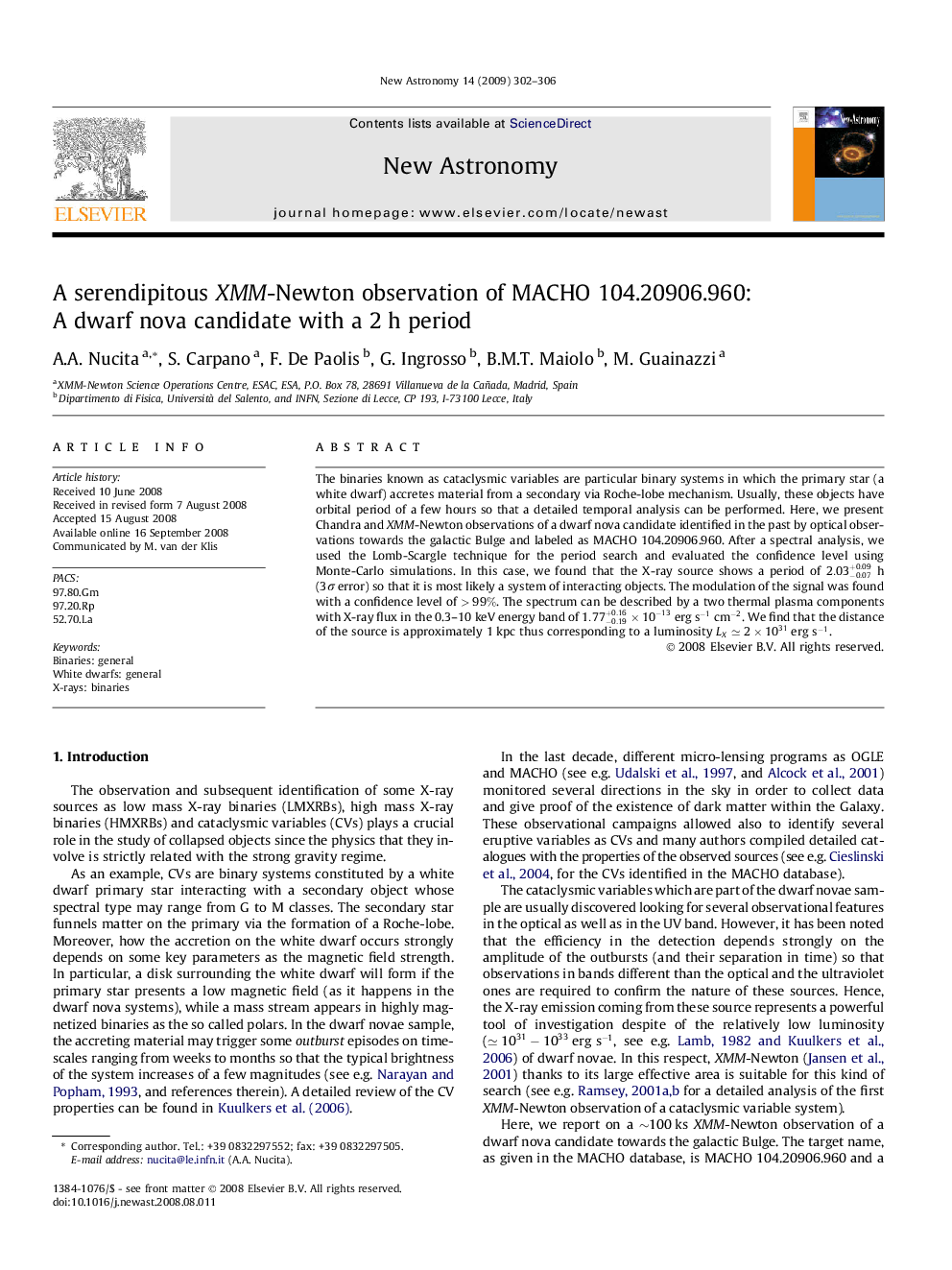| Article ID | Journal | Published Year | Pages | File Type |
|---|---|---|---|---|
| 1779645 | New Astronomy | 2009 | 5 Pages |
Abstract
The binaries known as cataclysmic variables are particular binary systems in which the primary star (a white dwarf) accretes material from a secondary via Roche-lobe mechanism. Usually, these objects have orbital period of a few hours so that a detailed temporal analysis can be performed. Here, we present Chandra and XMM-Newton observations of a dwarf nova candidate identified in the past by optical observations towards the galactic Bulge and labeled as MACHO 104.20906.960. After a spectral analysis, we used the Lomb-Scargle technique for the period search and evaluated the confidence level using Monte-Carlo simulations. In this case, we found that the X-ray source shows a period of 2.03-0.07+0.09 h (3Ï error) so that it is most likely a system of interacting objects. The modulation of the signal was found with a confidence level of >99%. The spectrum can be described by a two thermal plasma components with X-ray flux in the 0.3-10Â keV energy band of 1.77-0.19+0.16Ã10-13ergs-1cm-2. We find that the distance of the source is approximately 1Â kpc thus corresponding to a luminosity LXâ2Ã1031erg s-1.
Related Topics
Physical Sciences and Engineering
Physics and Astronomy
Astronomy and Astrophysics
Authors
A.A. Nucita, S. Carpano, F. De Paolis, G. Ingrosso, B.M.T. Maiolo, M. Guainazzi,
